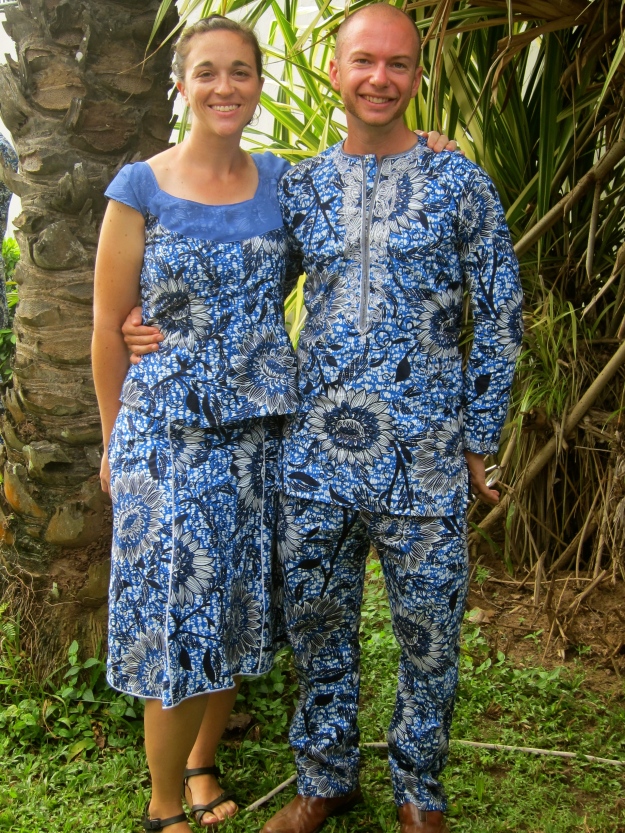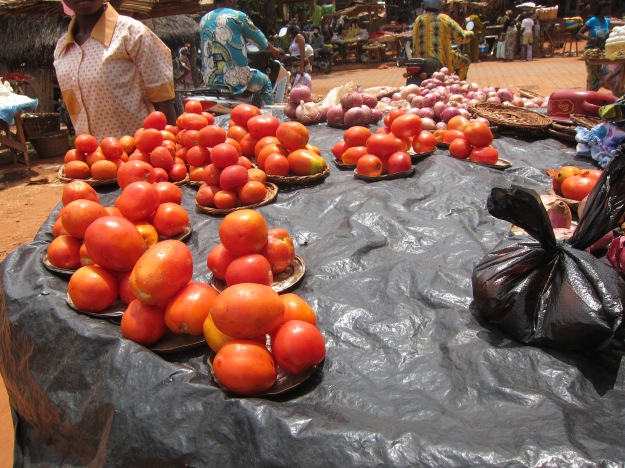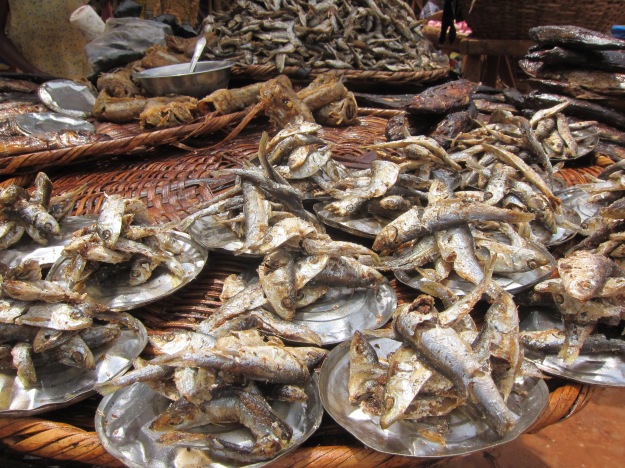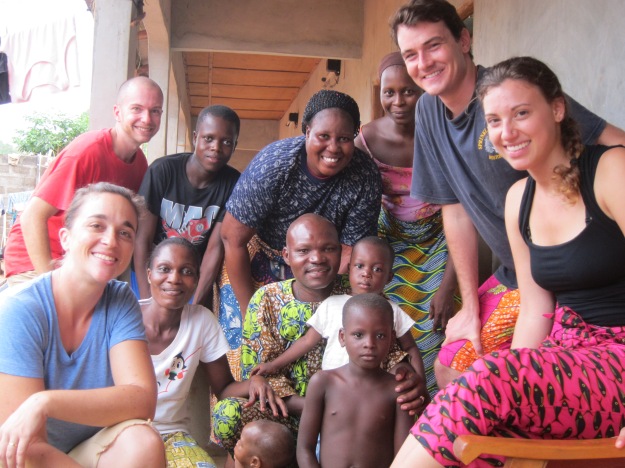Because of a great job opportunity at home for Jen, our Peace Corps service is ending about three weeks earlier than expected. We won’t be putting up any new posts for the next several days but will add some posts about the end of our service soon. Thanks for following our blog!
Tag Archives: Photo of the Day Benin
Motorcycle Repair Shop
After watching in horror as my driver dragged his feet on the ground to stop his motorcycle, I’ve learned to check that the brakes work before getting on a motorbike taxi. Luckily the average speed on local roads is 30 miles per hour or less.
Small motorcycles, dirt bikes and mopeds vastly outnumber cars on Benin’s roads. Roadside mechanics like this keep the bikes running long after they’d be thrown in the junk heap in the US. Safety norms aren’t up to American standards and a vehicle inspection process, if it exists, is not enforced.
Making Gari
I had another manioc adventure a few weeks ago, when I had the opportunity to participate as a cooperative I work with made gari, which is dried, powdered manioc. It’s one of my favorite Beninese foods.
The first step is to have the manioc mashed, which the group paid to have done elsewhere, so I didn’t see that step. We started with large sacks packed full of the smashed manioc, which we broke up into chunks and then sifted through screens.

The woody cores and other remainders on a spare screen. These were fed to the chickens and goats. The sifted manioc is flaky and light.

After sifting the fine powder went over the fire into a big metal pan, where it was toasted until thoroughly dry.

The last step was to put the toasted powder on plastic in the sun. I couldn’t quite figure out what this step accomplished… maybe it was just cooling off?

This is the area where we worked, which is a large courtyard within the cooperative president’s family compound. Most of the day, nobody was willing to be photographed (hence the headless photos), but I was allowed to take this non-close-up shot.
For eating, gari is sprinkled on beans or rice and mixed in with the sauce. Sometimes it is moistened with a little palm oil first, which makes it extra tasty. Yum!
My Favorite Dish
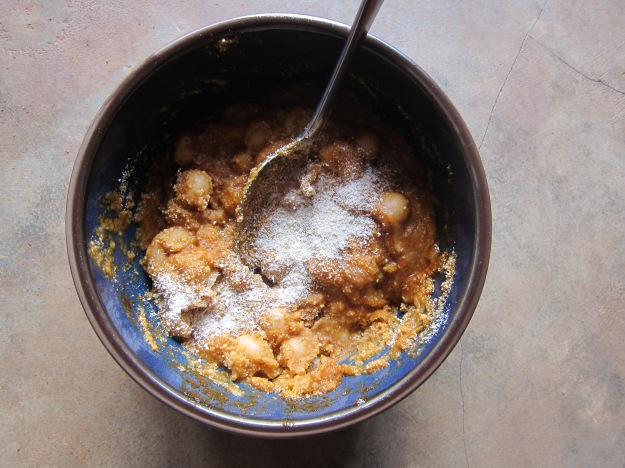 It doesn’t look like much, but this is my favorite Beninese food lately: vanzu beans with sauce and gari. Vanzu are big, perfectly spherical white beans that cook down to a creamy mush. They are delicious. There’s a woman in town who always has a big pot of these for sale. I eat them every chance I get.
It doesn’t look like much, but this is my favorite Beninese food lately: vanzu beans with sauce and gari. Vanzu are big, perfectly spherical white beans that cook down to a creamy mush. They are delicious. There’s a woman in town who always has a big pot of these for sale. I eat them every chance I get.
The Month When the Year’s Rain Starts
In Gun (our local language) March is xwejisun—“the month when the year’s rain starts.” It’s the hottest part of the year now, so we’re excited for the cooling rains. We’ve had a couple downpours, but the best was one truly gigantic lightning storm that lit up the sky for hours and brought the temperature down by about 20 degrees. Adam and I sat on the porch whooping with joy until the chilly, driving rain sent us indoors. For hours before and after the rains passed over us, the sky was flashing nonstop, and Adam make some long-exposure self-portraits.
Yesterday morning, the skies held potential for rain again, but the clouds passed and burned away. I’m excited about the rainy season because it will cool off, but also because we can collect the water that pours off our back roof, and it means less time pulling water from the well!
Laundry
In Cape Verde we spent six to eight hours a week washing our clothes by hand. In Benin we’ve decided to hire a local woman. She speaks no French and doesn’t understand our poor local-language skills. Another neighbor has to call her to ask her to come and then discuss price for us. We pay her about 1000 CFA ($2.00) to come once per week to do our laundry. Agricultural day laborers earn about the same for a day’s work in the fields.
